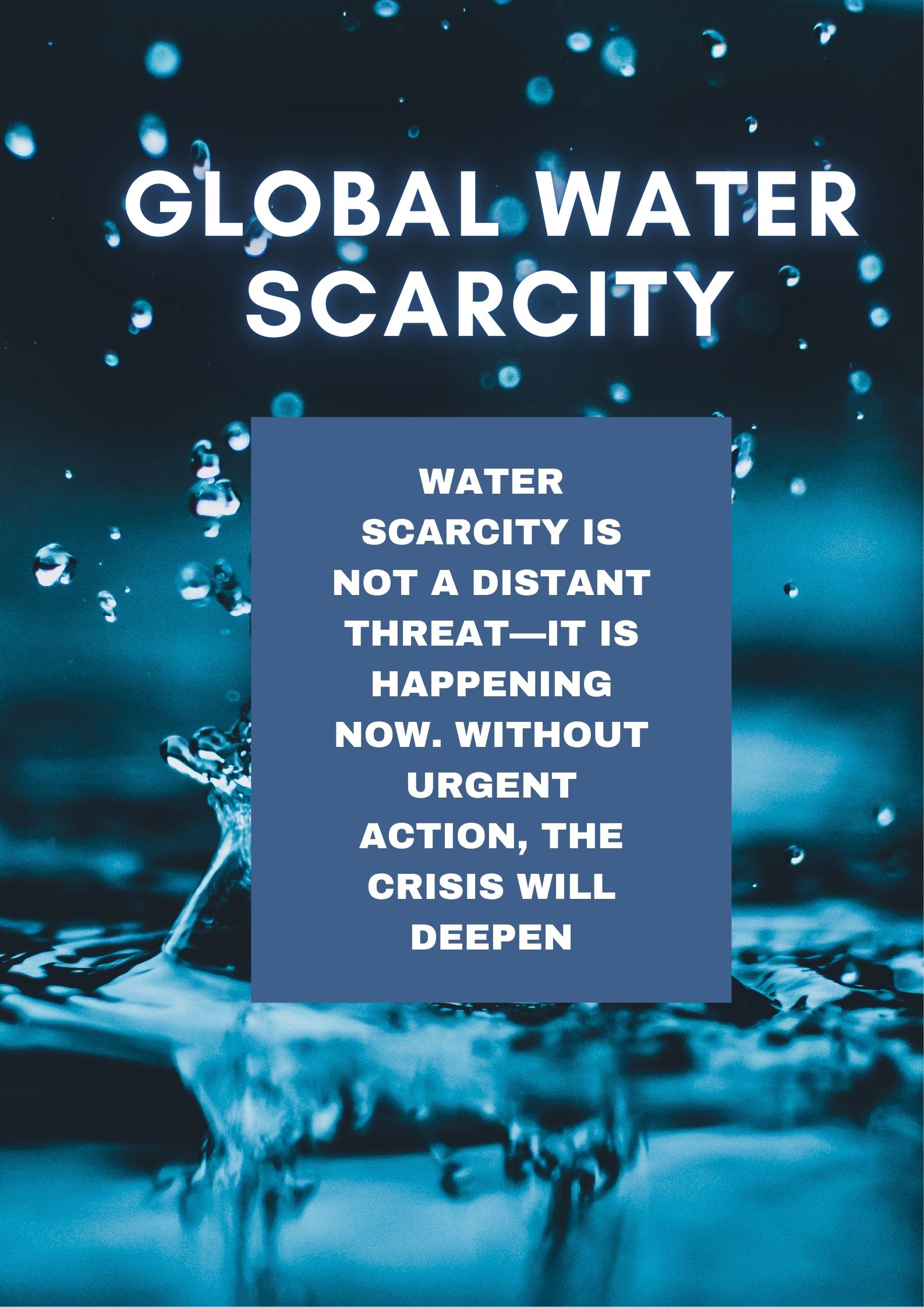A Crisis in the Making
Water is essential for life, yet billions of people across the world are facing a growing crisis—water scarcity. From drought-stricken regions in Africa to overpopulated urban areas in Asia, the demand for fresh water is rapidly outpacing supply. As climate change, population growth, and mismanagement of resources continue, water scarcity is transforming from a local concern to a global emergency.
Understanding Water Scarcity
Water scarcity occurs when the demand for water exceeds the available supply. This can be caused by physical shortages, poor water quality, or unequal distribution. There are two types of water scarcity:1. Physical water scarcity – where there simply isn’t enough water to meet all demands, including those for ecosystems.2. Economic water scarcity – where water is available, but people lack the infrastructure or financial means to access it.Both forms are detrimental, especially in developing nations where access to clean water can mean the difference between life and death.
Global Statistics Paint a Dire Picture
According to the United Nations, over 2 billion people live in countries experiencing high water stress. By 2025, half of the world’s population is expected to live in water-stressed areas. Agriculture, which uses about 70% of global freshwater, is heavily impacted, threatening food security for millions.In regions like Sub-Saharan Africa and parts of the Middle East, severe droughts have become more frequent due to climate change. Meanwhile, in megacities such as São Paulo, Cape Town, and Chennai, residents have faced the terrifying reality of “Day Zero”—the day when municipal water supplies run dry.
Causes of the Water Crisis
Several key factors contribute to the global water scarcity crisis:· Climate Change: Rising global temperatures are disrupting rainfall patterns, shrinking glaciers, and intensifying droughts.· Overpopulation: The global population is projected to reach nearly 10 billion by 2050, increasing demand for water in households, industry, and agriculture.· Pollution: Contaminated rivers and lakes render water unsafe, further reducing usable supply.· Inefficient Water Use: Many countries lack modern irrigation or conservation systems, leading to massive water loss.
Poor Governance: In some regions, political instability and corruption hinder effective water resource management The Impact on Human Life and the Environment
Water scarcity affects nearly every aspect of human development. Without access to clean water:
· Public health declines due to waterborne diseases.
· Women and children, especially in rural communities, spend hours daily fetching water, missing out on education and work.
· Agricultural yields drop, leading to hunger and malnutrition.
· Ecosystems suffer as rivers dry up and wetlands vanish.
Beyond these immediate effects, water scarcity can also fuel conflict and migration, as communities and countries compete over limited resources.
Solutions and Global Action
The good news is that solutions exist—and many are already in progress. Here’s what needs to happen:
· Investment in Infrastructure: Building reservoirs, pipelines, and efficient irrigation systems can help distribute water where it’s needed most.
· Water Recycling and Desalination: Technologies that recycle wastewater or convert seawater into fresh water are becoming more viable and affordable.
· Policy Reform: Governments must implement fair and sustainable water management policies.
· Education and Conservation: Public awareness campaigns can encourage individuals to reduce their water footprint through simple lifestyle changes.
International cooperation is also key. Initiatives like the UN’s Sustainable Development Goal 6 aim to ensure availability and sustainable management of water for all by 2030.
Conclusion
Water scarcity is not a distant threat—it is happening now. Without urgent action, the crisis will deepen, impacting billions of lives and destabilizing economies. Through innovation, cooperation, and responsible management, the world can overcome this challenge. But time is running out, and the window for meaningful change is quickly closing.
- Info@salihaonlineacademy.com
- Chaman Zar Colony, Rawalpindi
- Sunrise At: 5:15 AM
- Sunset At: 4:50 PM
- Let’s Talk +923301790195


Leave A Comment